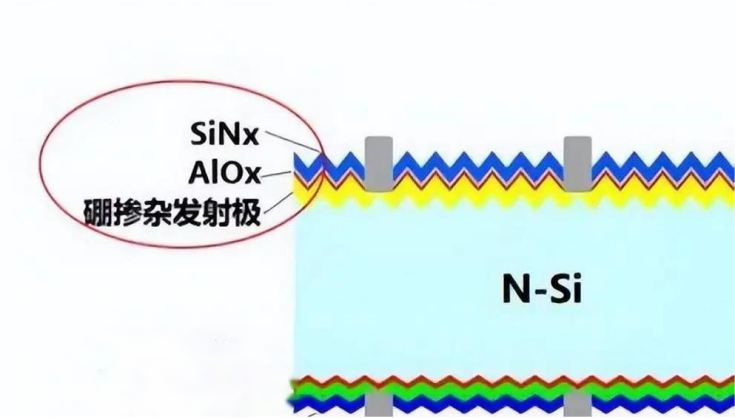
量子效率测试仪
PL/EL一体机
Sinton硅片少子寿命测试仪
Sinton硅块少子寿命测试仪
绒面反射率测试仪
3D共聚焦显微镜
清洗制绒工作站
在线四探针方阻测试仪
全自动扫描四探针方阻测试仪
在线薄膜厚度测试仪
晶化率测试仪
Horiba显微共焦拉曼光谱仪
傅里叶红外光谱仪
霍尔效应测试仪
分光光度计
全光谱椭偏仪
Horiba椭圆偏振光谱仪
TLM接触电阻率测试仪
超景深显微镜
网版智能影像测量仪
全自动影像测量仪
卧式拉力机
电池片稳态光衰老化试验箱
电池片紫外老化试验箱
电池片拉脱力综合测试仪
外观检验台
湿漏电测试系统
组件实验室EL测试仪
紫外老化试验箱
稳态光衰老化试验箱
电流连续性监测系统
PID测试系统
旁路二极管测试系统
LeTID测试系统
反向电流过载系统
脉冲电压测试系统
绝缘耐压测试仪
接地连续性测试仪
绝缘耐压接地测试仪
湿热环境试验箱
湿冻环境试验箱
热循环试验箱
动态机械载荷测试机
静态机械载荷测试机
冰雹冲击试验机
引出端强度试验机
霰弹冲击试验机
抗划伤(切割)测试机
剥离试验机
万能材料试验机(单臂)
万能材料试验机(双臂)
光伏玻璃透过率测试仪
醋酸测试试验箱
交联度测试系统
二极管接线盒综合测试仪
落球冲击试验机
半自动四探针
全自动探针式台阶仪
多通道太阳能MPPT系统
Horiba稳瞬态荧光光谱仪
钙钛矿P1激光划线测试仪
钙钛矿在线膜厚测试仪
钙钛矿工艺检测工作站
手持式IV测试仪
便携式EL测试仪
手持热成像测试仪
户外组件IV测试仪
户外组件多通道测试系统
光伏逆变器电能质量测试仪
无人机EL检测仪
优化太阳能电池片性能:美能UV紫外老化试验箱的关键作用
日期:2024-04-26浏览量:10
电池片的性能与耐久性直接影响太阳能系统的效率和可靠性。进行老化测试,尤其是紫外线(UV)老化测试,对于评估和保证电池片在长期环境影响下的表现至关重要。美能电池片UV紫外老化试验箱采用高精度光照模拟技术,精确模拟自然光照条件,为电池片的产品开发和质量控制提供了关键的技术支持。本文将探讨这种高精度光照模拟技术如何优化电池片测试,从而提升产品性能和可靠性。

紫外线(UV)辐射对电池片性能的潜在负面影响
紫外线(UV)辐射对太阳能电池片性能的潜在负面影响主要体现在性能衰减上。通过探讨紫外线(UV)辐射对硅基电池片钝化界面的具体影响,揭示紫外线辐射如何引起材料和界面的化学及物理变化。这些变化通常导致功率输出显著下降和光伏效率降低。对这些影响的深入了解对于提升光伏技术的实用性和确保其长期稳定性至关重要。

紫外线照射前后两个不同钝化的外部量子效率
实验结果显示,在300至900纳米的光谱范围内,使用氮化硅(SiNx)钝化的电池片在紫外线辐射下表现出显著的量子效率下降。这种性能衰减主要归因于紫外线导致的表面退化现象。此外,实验数据也揭示了在光子能量高于3.4 eV的条件下,虽然受照面的硅钝化界面保持稳定,但辐射降解效应显著增加了前表面重组模块的电流密度,这也使得整体性能大幅降低。
电池片的紫外线防护实验
通过对比氮化硅(SiNx)和氧化铝(AlOx)+氮化硅(SiNx)与两种不同钝化材料在紫外线照射下的性能表现,以评估这些材料保护电池片免受紫外线辐射影响的有效性。

TOPCon电池正面采用SiNx+AlOx
氮化硅的表现
表面钝化:氮化硅通过减少电子和空穴在硅表面的复合来提高电池的效率。这是通过在硅晶体表面形成一层钝化层来实现的,该层有效地减少了表面态密度,从而减少了载流子的非辐射复合。
折射率调节:氮化硅的折射率可以通过改变沉积过程中的气氛成分(如氨气与硅烷的比例)光学属性
抗反射性能:SiNx层不仅作为钝化层,还因其适中的折射率(约2.0左右)帮助减少光的反射,提高光的吸收。在实验中,SiNx层的复折射率通过变角椭圆偏振法(VASE)进行测量,以确保其最优的光学特性。
抗UV老化:在UV照射测试中,使用SiNx钝化的电池显示出了性能退化,特别是在UV暴露后。这可能是由于UV光照引起的SiNx层的化学结构变化,如Si-H键的断裂,导致钝化效果下降。
电池效率和稳定性:虽然SiNx提供了良好的初始钝化,但在长时间的UV暴露下,其稳定性可能比AlOx/SiNx复合层要差。在UV测试中表现出较大的性能下降,主要体现在功率降低和短路电流密度(Jsc)的损失。

紫外线照射不同测试功率
氧化铝(AlOx)+氮化硅(SiNx)
氮化硅(SiNx)与氧化铝(AlOx)的组合被用作硅基太阳能电池的表面钝化层。这种复合钝化层的目的是结合两种材料的优势,以提高电池的性能和稳定性。
这种复合层通过结合AlOx的化学钝化和SiNx的表面钝化能力,实现了更低的表面复合速度和更高的载流子寿命。
氧化铝层通常较薄,可优化表面电场,而氮化硅则提供必要的物理保护和光学增强。
在UV耐久性测试中,AlOx/SiNx钝化的模块表现出较少的性能退化。这可能是因为AlOx层在接受UV辐射时提供了额外的化学稳定性,保护了SiNx层下的硅表面。
相比仅用SiNx钝化的电池,复合钝化层表现出更好的长期稳定性和耐环境应激能力。
美能电池片UV紫外老化试验箱

联系电话:400-008-6690
美能电池片UV紫外老化试验箱,通过模拟不同光照情况来监控电池片在光照下产生的变化,可用于光伏电池片产品开发和质量把控或评估电池片组成后耐用性的变化试验。
辐照面积:800×800mm(可定制);
光强范围:200~1000W/㎡(可定制);
光谱范围:280~400nm;
不均匀性<15% ,
配备独立系统,可单独调节各只光源辐照强度和整体辐照强度
在紫外线(UV)老化测试中,准确模拟紫外光照条件对于理解和改善太阳能电池片的性能与耐久性至关重要。美能电池片UV紫外老化试验箱能够详细评估电池片在长期环境暴露后的稳定性,还能为产品开发和质量控制提供关键数据。我们期待电池片技术的持续进步,以及对更广泛可再生能源技术应用的积极贡献。




































































